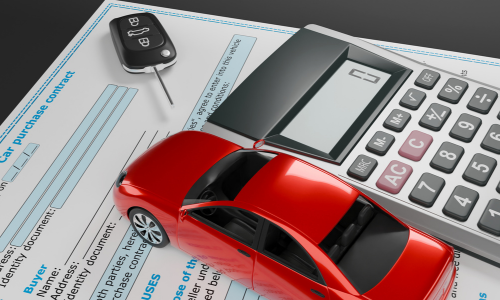Curiosities
Why are there batteries of so many different sizes and shapes?
Advertisement
1. **Variety of Devices**: Different electronic devices have varying power requirements. For example, a remote control requires a small, lightweight battery, while a laptop needs a larger, more powerful battery. Therefore, different battery sizes and capacities are required to serve this variety of devices.
2. **Available Space**: In some cases, the size and shape of the battery is determined by the available space in the device. Small devices, such as wristwatches, may require compact, flat batteries to fit within the limited space.
3. **Performance and Capacity**: Batteries come in different technologies and chemistries, each with their own performance and capacity characteristics. Some devices may require high-capacity batteries for longer life, while others may prioritize batteries that can deliver power quickly.
4. **Portability and Weight**: In portable devices like smartphones and cameras, battery size and weight can be critical. Smaller, lighter batteries can make devices more portable and easier to carry.
5. **Technological Evolution**: As battery technology advances, new sizes and formats are developed to meet the demands of modern devices. For example, lithium-ion rechargeable batteries have become popular due to their high energy density and rechargeability, leading to the development of batteries in increasingly compact formats.
In short, the variety of battery sizes and formats is a response to the diverse needs and requirements of modern electronic devices, always seeking to optimize performance, capacity, portability and compatibility.
Simple origins, complex functions
This quote is an interesting reflection on how many complex technologies and systems have simple, fundamental origins. In many cases, something that starts with a basic idea or simple concept can evolve into something much more complex and sophisticated as it is developed and refined over time. Here are some ways to interpret this idea:
1. **Technological Development**: Many of the technologies we use today, from computers to mobile devices, have their roots in simple principles and concepts. For example, the first computers were huge, rudimentary machines that performed simple calculations, but over time they evolved into the complex, multifunctional devices we have today.
2. **Biology and Evolution**: In nature, life began as very simple single-celled life forms and evolved over billions of years into the complex and diverse life forms we see today. This process of gradual evolution is an example of how complexity can arise from simple origins.
3. **Social and Cultural Systems**: Even social institutions and cultural systems can follow this pattern. For example, many of the traditions and cultural practices that exist today may have started as simple customs or basic rituals, but over time they have become an integral and complex part of society.
4. **Engineering and Design**: In the field of engineering and design, many products and systems start with simple ideas or basic prototypes and then go through iterations and refinements to become complex, multifaceted final products.
These examples demonstrate how something simple at first can evolve into something much more complex as it is developed and refined over time, reflecting humanity's ability to create and innovate based on simple foundations.
The different types of current batteries
There are several types of batteries available today, each with their own characteristics, applications, and underlying technologies. Here are some of the most common types of batteries:
1. **Lithium-ion (Li-ion) Batteries**: Lithium-ion batteries are widely used in a variety of portable electronic devices, such as smartphones, laptops, tablets, and digital cameras. They are known for their high energy density, long service life, low self-discharge rate, and lack of memory effect.
2. **Lithium-ion polymer (LiPo) batteries**: Similar to lithium-ion batteries, lithium-ion polymer batteries offer high energy density and are used in portable devices and wearables. They are known for their flexibility in terms of shape and size, which makes them ideal for devices with compact designs.
3. **Sodium-ion (Na-ion) batteries**: Sodium-ion batteries are being developed as a potentially cheaper and more abundant alternative to lithium-ion batteries. They share many of the characteristics of lithium-ion batteries, but use sodium instead of lithium as the carrier ion.
4. **Sulfur-ion (Li-S) batteries**: Sulfur-ion batteries are under development as a promising high-energy-density alternative to lithium-ion batteries. They have the potential to store up to five times more energy than conventional lithium-ion batteries.
5. **LiFePO4 (Iron-Ion Phosphate) Batteries**: These batteries are known for their chemical stability, safety, and long service life. They are often used in applications that require high discharge current, such as electric vehicles and energy storage systems.
6. **Lead-acid batteries**: Although they are older compared to lithium-ion batteries, lead-acid batteries are still widely used in applications such as automotive vehicles, backup power systems, and solar power systems. They are known for their reliability, low cost, and ability to deliver high starting currents.
These are just a few examples of the different types of batteries available today. The continuous development of new technologies and materials is constantly driving the evolution of batteries, with the aim of improving the efficiency, safety and sustainability of portable and stationary power sources.
Trending Topics

Working as a cleaner for $1,000 to $4,000 a month: Is it worth it? See the job details
Cleaning jobs can earn up to US$1,000 per month. See if this role is worth it and learn about its tasks, profile, and challenges.
Keep ReadingYou may also like

The best discount coupons: Where to find them
Discover the best discount coupon and cashback platforms to save a lot when shopping online.
Keep Reading
Car value app: see the best ones for evaluating vehicles
See how a car value app can help you identify fair prices, vehicle histories and simulations.
Keep Reading
Apps to watch anime for free: Complete guide
Discover the best apps to watch anime for free. See options to binge-watch your favorite anime without spending anything!
Keep Reading
